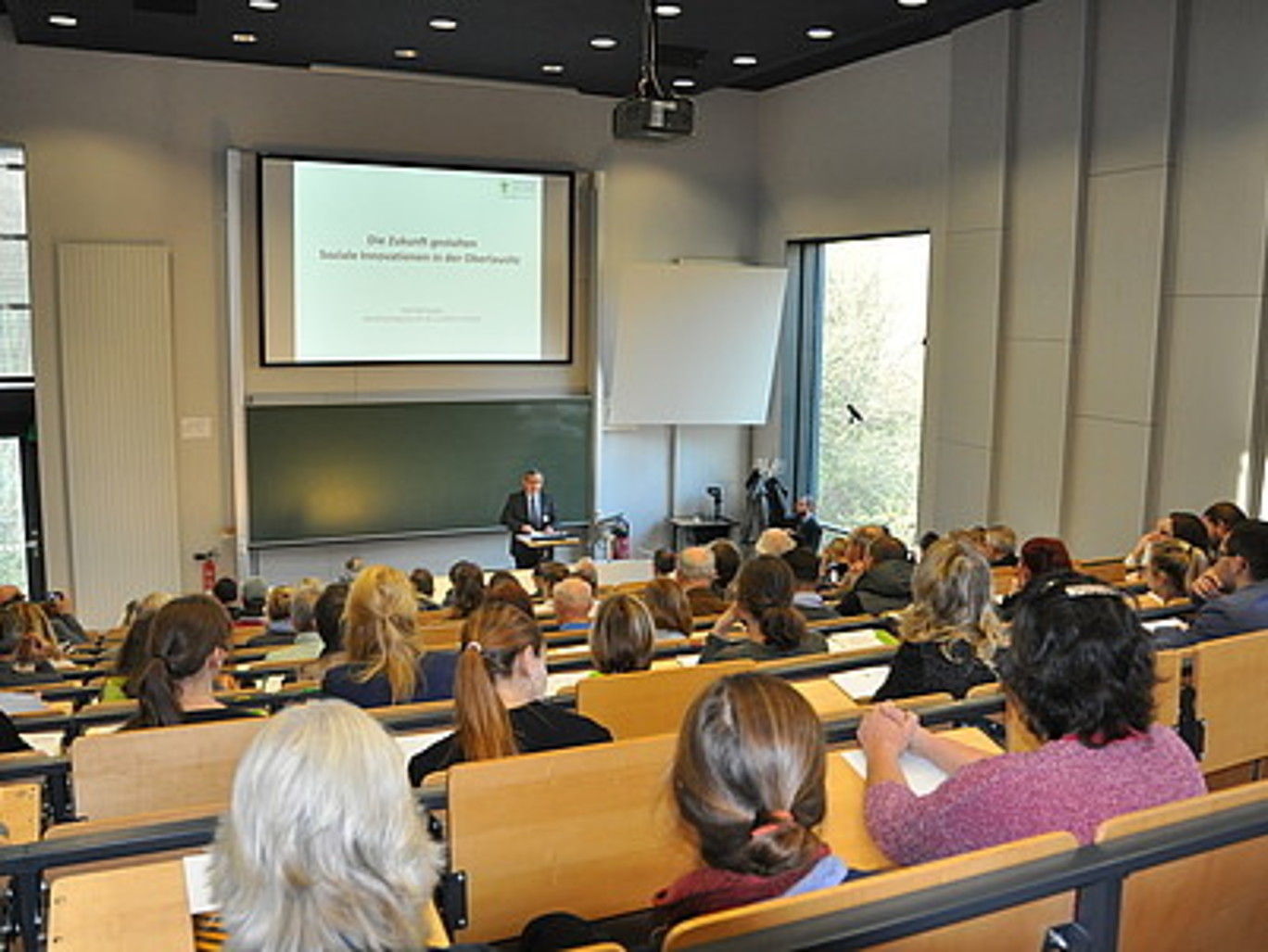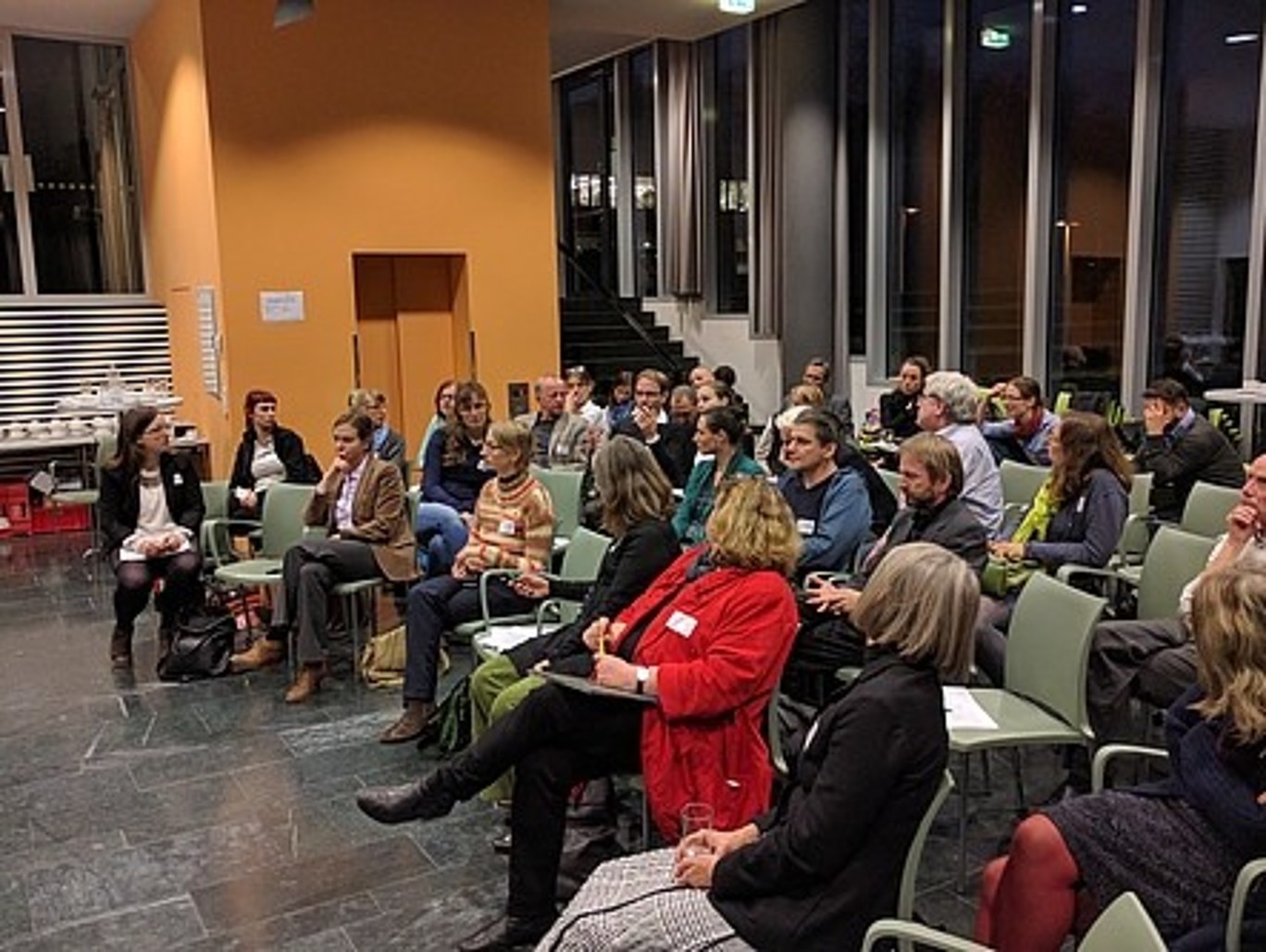The TRAWOS Institute, in cooperation with the district of Görlitz, hosted the 10th November Conference on November 25, 2016 at the university campus in Görlitz. The event was funded by the Saxon State Chancellery via the Demography Directive.

More than 120 participants from the region, Saxony and beyond came together with speakers from Vienna, Berlin, Potsdam, Weißwasser, Erlau in Saxony and the Upper Lusatia region to discuss Development prospects for rural regions in the face of demographic, social and economic change processes.
Like other rural areas, Upper Lusatia faces the challenge of ensuring quality of life beyond metropolitan areas, developing future prospects and shaping them in practice. This requires not only political and administrative players at state and municipal level, but also players from business and civil society who, together with local authorities, must develop sustainable plans to safeguard services of general interest in rural regions. The success of this depends on the local actors, their attitudes, their openness to new ideas and their ability to change the way things have been done up to now. The endogenous potential for social innovation in a region lies in the interaction between people and institutions from all areas of society. All generations are equally called upon to do this. However, an ageing society also raises new questions about innovative potential and possible barriers to innovation.
"So less is different!" Or is it? In the last two decades, a disproportionately high number of young women have emigrated from the district and the Upper Lusatia region. This exodus not only accelerates the ageing of the population, but also weakens the economic, political and cultural development potential, and thus not least the innovative strength of the region. It is therefore all the more astonishing that efforts to make active women visible in the region and to support their retention in the region seem to meet with little response. Why is that?
The discussions were based on findings from two research projects on ambivalent qualities of rural areas in Upper Lusatia, their actors and social practices. Prof. Raj Kollmorgen presented the results of the project on social innovations funded by the SMWK. Case studies were used to examine the conditions of emergence, interaction relationships and effectiveness of initiatives in the region. Dr. Anita Kottwitz presented the results of the research project on motives for staying and opportunities for qualified women in the district of Görlitz, which was funded by the Demography Directive. Among other things, migration tendencies and retention strategies of the stakeholders were discussed . The research results were supplemented in the morning by the "View from the outside. Prof. Eckehard Binas once initiated the research focus "Transformation Processes in Economy and Society" at the Zittau/Görlitz University of Applied Sciences and is now President of the University of Applied Sciences in Potsdam. In front of his rural-urban experience space, he problematizes the ambivalent relationship between rurality and urbanity.
In the intended intensive interweaving of science and practice, the participants discussed the following questions with the guest speakers in the proven format of four parallel workshop discussions after the lunch break
(1) conditions for innovation in rural regions and gender-specific approaches to dealing with demographic change
(2) Necessary infrastructures to attract those who come and keep those who stay;
(3) the innovation potential of an ageing society in rural areas and
(4) specific modes of communication and networking in rural areas.
Zittau/Görlitz University of Applied Sciences, TRAWOS Institute
"Shaping the future. Social innovations in Upper Lusatia"
Zittau/Görlitz University of Applied Sciences, TRAWOS Institute
"Motives for staying and opportunities for young women in the district of Görlitz"
Freelance spatial scientist, Vienna
"Women - beacons of hope for rural areas! How can we succeed?"
Leibniz Institute for Spatial Social Research, Erkner
"The future of rural communities. Innovative responses to peripheralization"
Weißwasser municipal association, project as part of the BMBF funding measure "Kommune innovativ"
"Weißwasser. People make a small town?"
Institute for Communication, Information and Education (KIB) e.V., Görlitz
"Proactive administration?"
Generationenbahnhof Erlau e.V. (Saxony)
"Preserve the OLD - gain NEW LAND - shape the FUTURE together: Generation station Erlau"

The results were published in March 2017 in the study "Who's coming? Who is leaving? Who stays?" published in March 2017.